Hate seeing a bearing that looks like this?

How about one that has already come apart and left behind nothing but a damaged race stuck in place? Or what about when you're dealing with tapered-roller bearings, which have a race that must be removed after the bearing has already come out? Yeah, that's the worst thing (short of running out of beer!) to ruin a good day in the shop.
I am about to show y'all a very clever trick for pulling bearing races out of any housing made of any material, and which does NOT damage the housing. It also doesn't involve any cutting, beating, skinned knuckles, damaged tools, etc. Interested? Read on...
Here's how to take out a bearing race the easy way: With one of these! V V
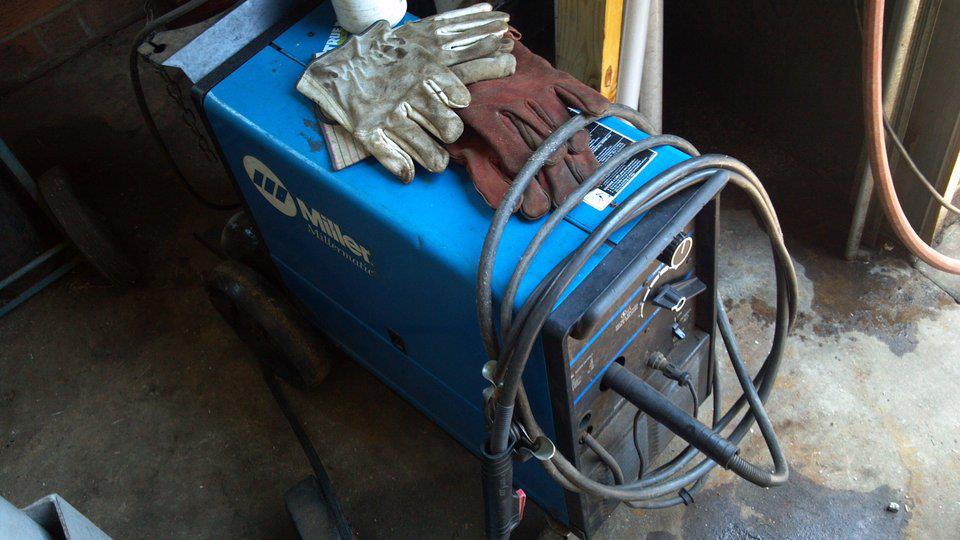
I chose an old, rusted-up Cub Cadet riding mower spindle for this demonstration. It has been used, abused, and was left abandoned. This is not a nice clean part off the shelf.
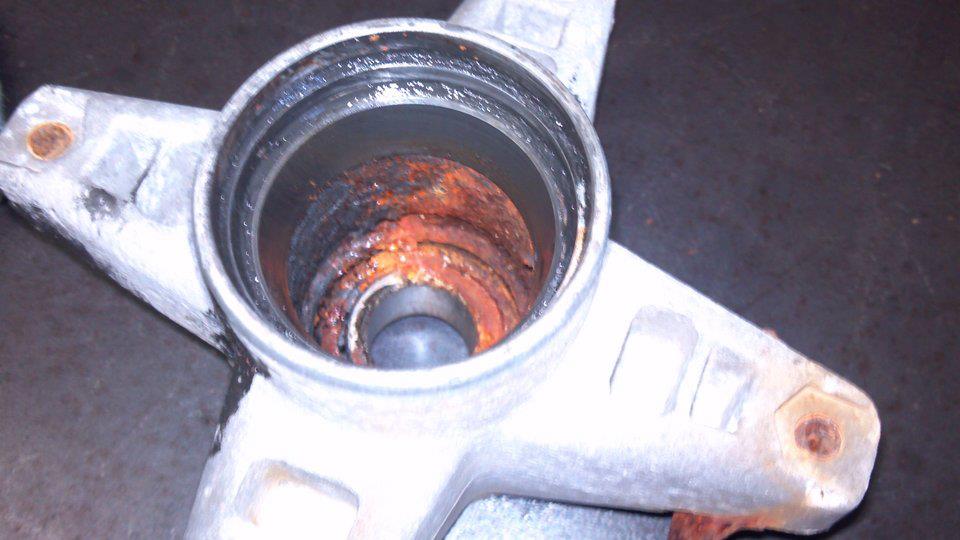
Got your welder? Good. Know how to use it? Great! I assume I don't have to go on a long rant about safety at this point? Excellent.........Be careful PLEASE!! B)
Get your workpiece secured, usually with a vise if you're dealing with something small such as a mower spindle or trailer wheel hub, etc. If the bearing is stuck in something bigger, just make sure it doesn't accidentally move while you're welding.
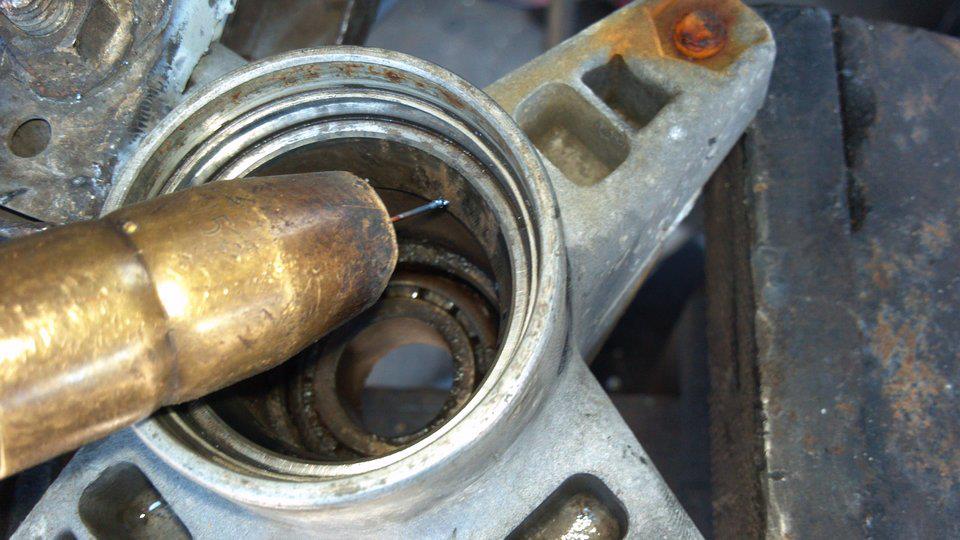
Now that you're ready to weld, set up the machine and lay out a nice hot bead all the way around the inside of the bearing race. You want the weld to penetrate the race thoroughly. On most MiG welders, such as the Miller unit I used, the "Medium" or "# 3" heat range setting works well. If you're using flux core wire, dial it back a setting.
Here's the intended result. The weld doesn't have to be pretty as long as you get the bead all the way around. I rushed this one so I'd have time to post this while on lunch break! lol

Now that you have a nice bead in place, it is time to extract the bearing race. The race is now loose inside the tube in which it was originally stuck tight. Turn the workpiece over, and the race will often slide right on out. Sometimes, as in my case, grease will have worked its way in between the bearing race and the wall of the tube it was in, so the race may need to be teased out with a pair of pliers. Either way, it won't put up much of a fight.
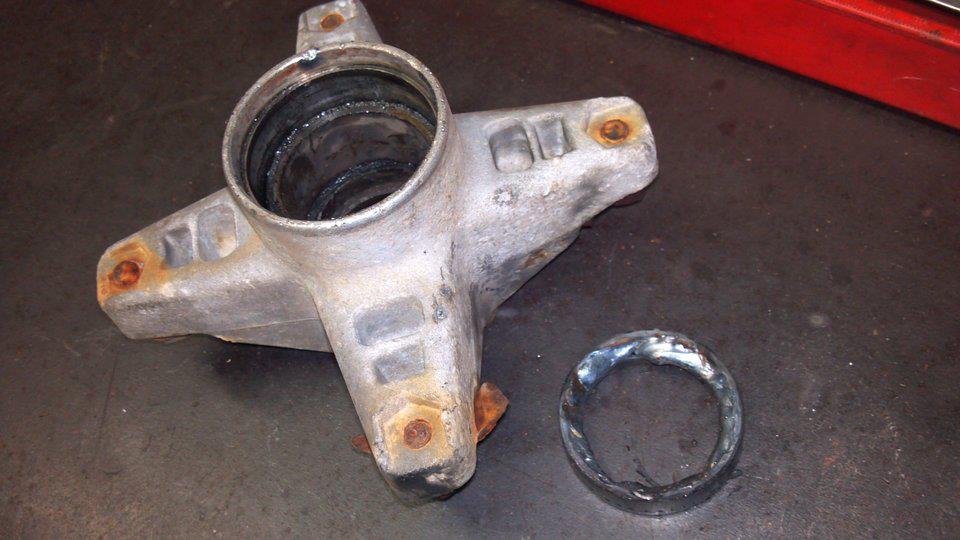
And that's it! This method of bearing removal works by using the bead of weld to reduce the overall circumfrence of the bearing race by a few thousands of an inch. When you lay a bead down all the way around the inside of a race, the steel is drawn inwards until things have contracted enough for the race to slide right out.
I do this trick regularly at work. Here are a few spent races which have seen the business end of a MiG welder:
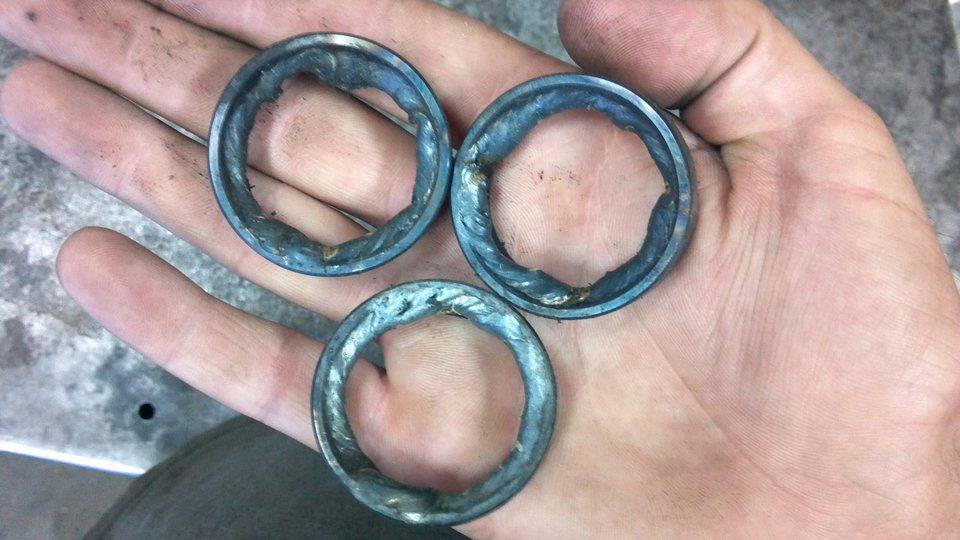
CAUTION: Be extremely careful when welding on a bearing race inside a steel tube. If you stray with your hand and the bead accidentally hits the side of the tube, you may weld the bearing race tightly in place. Its not fun having to break out a grinder and clean up your F-up before trying again. This is not as much of a concern when welding a bearing out of an aluminum or cast-iron housing, as a stray bead will be less likely to stick, but still watch what you are doing and take your time. If you need practice welding, do it on something else before attempting what you have read here.
Lastly, this trick CAN be done with a stick welder, but you had better have had some practice before attempting it. I prefer MiG or flux-core machines for this operation.
Happy welding!! I:I

How about one that has already come apart and left behind nothing but a damaged race stuck in place? Or what about when you're dealing with tapered-roller bearings, which have a race that must be removed after the bearing has already come out? Yeah, that's the worst thing (short of running out of beer!) to ruin a good day in the shop.
I am about to show y'all a very clever trick for pulling bearing races out of any housing made of any material, and which does NOT damage the housing. It also doesn't involve any cutting, beating, skinned knuckles, damaged tools, etc. Interested? Read on...
Here's how to take out a bearing race the easy way: With one of these! V V

I chose an old, rusted-up Cub Cadet riding mower spindle for this demonstration. It has been used, abused, and was left abandoned. This is not a nice clean part off the shelf.

Got your welder? Good. Know how to use it? Great! I assume I don't have to go on a long rant about safety at this point? Excellent.........Be careful PLEASE!! B)
Get your workpiece secured, usually with a vise if you're dealing with something small such as a mower spindle or trailer wheel hub, etc. If the bearing is stuck in something bigger, just make sure it doesn't accidentally move while you're welding.

Now that you're ready to weld, set up the machine and lay out a nice hot bead all the way around the inside of the bearing race. You want the weld to penetrate the race thoroughly. On most MiG welders, such as the Miller unit I used, the "Medium" or "# 3" heat range setting works well. If you're using flux core wire, dial it back a setting.
Here's the intended result. The weld doesn't have to be pretty as long as you get the bead all the way around. I rushed this one so I'd have time to post this while on lunch break! lol

Now that you have a nice bead in place, it is time to extract the bearing race. The race is now loose inside the tube in which it was originally stuck tight. Turn the workpiece over, and the race will often slide right on out. Sometimes, as in my case, grease will have worked its way in between the bearing race and the wall of the tube it was in, so the race may need to be teased out with a pair of pliers. Either way, it won't put up much of a fight.

And that's it! This method of bearing removal works by using the bead of weld to reduce the overall circumfrence of the bearing race by a few thousands of an inch. When you lay a bead down all the way around the inside of a race, the steel is drawn inwards until things have contracted enough for the race to slide right out.
I do this trick regularly at work. Here are a few spent races which have seen the business end of a MiG welder:

CAUTION: Be extremely careful when welding on a bearing race inside a steel tube. If you stray with your hand and the bead accidentally hits the side of the tube, you may weld the bearing race tightly in place. Its not fun having to break out a grinder and clean up your F-up before trying again. This is not as much of a concern when welding a bearing out of an aluminum or cast-iron housing, as a stray bead will be less likely to stick, but still watch what you are doing and take your time. If you need practice welding, do it on something else before attempting what you have read here.
Lastly, this trick CAN be done with a stick welder, but you had better have had some practice before attempting it. I prefer MiG or flux-core machines for this operation.
Happy welding!! I:I
